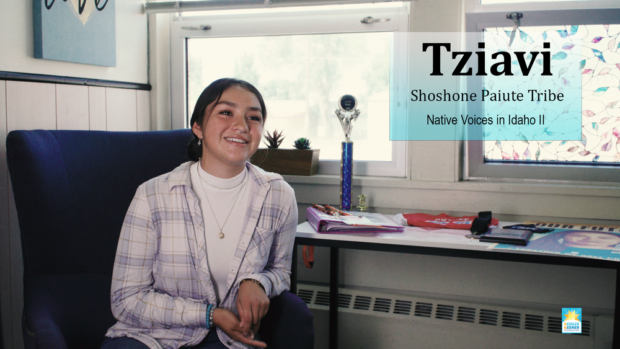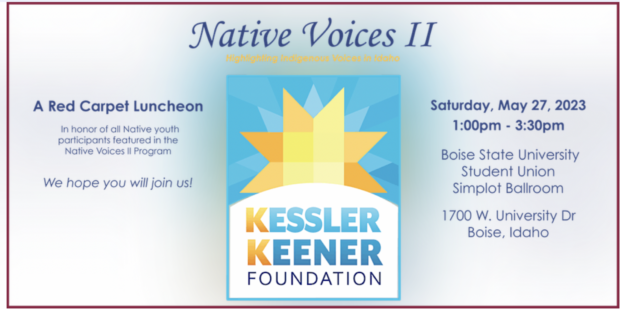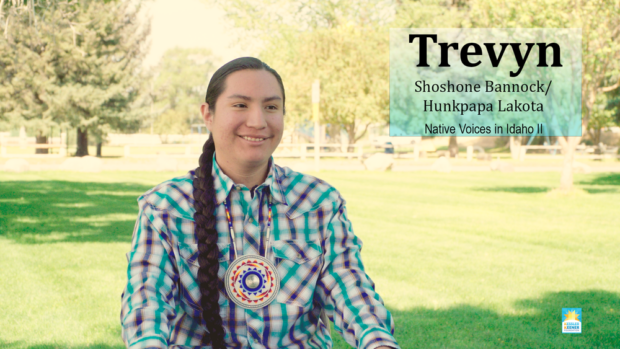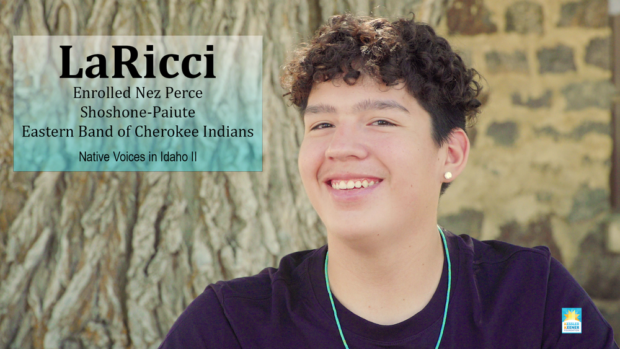Native Americans in Idaho often feel invisible and silenced, especially in classrooms.
But Saturday, Indigenous youths from across the state will claim their place in the spotlight, and become celebrities for an afternoon at a red-carpet film premiere that will make their voices heard.
The teens are the stars of a new video series launching this weekend that highlights the stories of Native Americans. Dubbed Native Voices II, the videos are the second installment in a series of resources made for Idaho teachers.
The project aims “to inspire a passion for cross-cultural learning and to cultivate a community of understanding and respect for Indigenous experiences and contributions,” according to a press release.
Filmmaker Stephanie Cullen, a Kānaka Maoli (Native Hawaiian), and interviewer Antoinette Cavanaugh, a Shoshone-Paiute tribal member, traveled across Idaho to film Native students responding to these prompts: What is your life like today? What do you want folks to know about Native/Indigenous peoples?
“There’s nothing else like it in the state of Idaho,” Ed Keener, board president for the Kessler Keener Foundation, said.

The foundation, a nonprofit that aims to “uplift voices of underrepresented people,” sponsored the Native Voices project, and a generous grant from the Idaho Women’s Charitable Foundation made part two possible.
For Keener, the effort has been a worthwhile investment: “There’s a great, crying need for accurate information” about Native Americans, he said. “We just feel it’s a great place to put our energies.”
While Idaho standards call for students to learn about Native Americans from kindergarten through high school, teachers may not have the time or background knowledge to build lessons. And students are still earning diplomas without knowing the basics about Indigenous communities.

Even now, there are Idaho teachers who still have their students make headdresses to commemorate Thanksgiving, and who teach inaccurate portrayals of that historical meal.
And some people still “don’t know that Native people are here … in Pocatello and Boise and Idaho Falls and Lewiston and Moscow,” Keener said.
He hopes the videos help the “non-Native public understand that Native people have similar interests and do similar things. They aren’t exotic or strange or extinct.”

This project aims to help teachers bridge the gap between requirements and reality. Keener’s greatest goal is for the project’s resources — which include videos, lesson plans, and more — to be widely used throughout the state.
Idaho students need to see “Native peoples as resilient and very present and offering great things to our society,” he said.
Teagan Larkin, of the Agaidika and Tukudika Tribes and Weiser People, is among the teens featured in the videos.

Larkin, who was featured by Ed News in October, is passionate about sharing the impact of boarding schools on Native Americans, which she discusses in her video.
“Cultural assimilation took a piece of us … took our identity,” she said. “In order to heal, you have to acknowledge your hurt.”
The videos will become available on the Kessler Keener Foundation website this weekend, after their initial release at the premiere.

The Foundation is also looking to hire Native American teachers to create future resources for the project. Keener asks that anyone interested email him at [email protected].
For further reading, check out our recent series on Native American education in Idaho.
